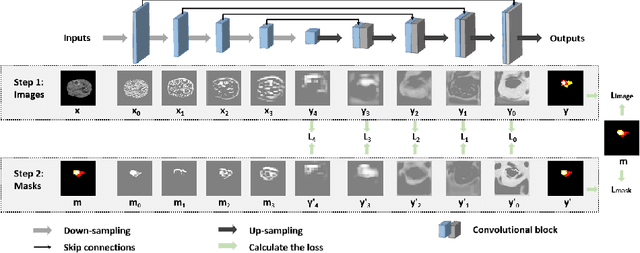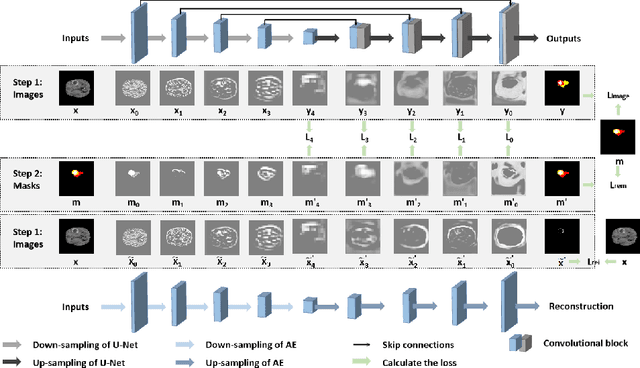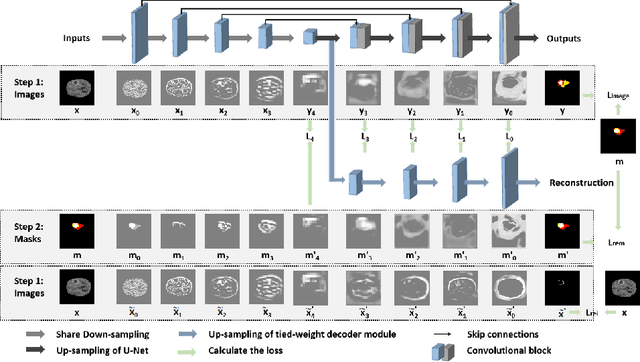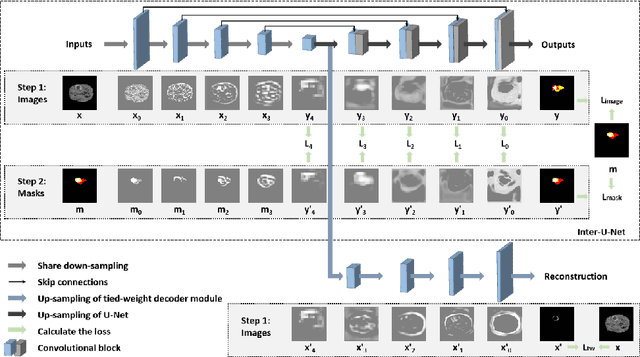Efficient Medical Image Segmentation with Intermediate Supervision Mechanism
Paper and Code
Nov 15, 2020



Because the expansion path of U-Net may ignore the characteristics of small targets, intermediate supervision mechanism is proposed. The original mask is also entered into the network as a label for intermediate output. However, U-Net is mainly engaged in segmentation, and the extracted features are also targeted at segmentation location information, and the input and output are different. The label we need is that the input and output are both original masks, which is more similar to the refactoring process, so we propose another intermediate supervision mechanism. However, the features extracted by the contraction path of this intermediate monitoring mechanism are not necessarily consistent. For example, U-Net's contraction path extracts transverse features, while auto-encoder extracts longitudinal features, which may cause the output of the expansion path to be inconsistent with the label. Therefore, we put forward the intermediate supervision mechanism of shared-weight decoder module. Although the intermediate supervision mechanism improves the segmentation accuracy, the training time is too long due to the extra input and multiple loss functions. For one of these problems, we have introduced tied-weight decoder. To reduce the redundancy of the model, we combine shared-weight decoder module with tied-weight decoder module.
 Add to Chrome
Add to Chrome Add to Firefox
Add to Firefox Add to Edge
Add to Edge